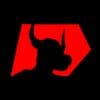
In the Forex world, the term “order” refers to how a trader either enters or exits a trade. There is a myriad of forex orders that can be placed on the forex market, depending on the broker chosen. Even though different brokers accept different types of Forex orders, there are some basic order types that almost all brokers universally provide. In this article, we will be looking at some of the most used order types in the forex market.
Types of Orders
Market Order:
A market order refers to an order to buy or sell, at the best available price. It is possibly one of the most basic and often the first forex order type traders come across. Traders who wish to get into the Forex market immediately, can trade a market order and enter at the prevailing price.
To help explain this, we shall take an example. Let us say that that the bit price for the EUR/USD pair is currently at 1.2140 with the asking price at 1.2142. If a trader is willing to buy the EUR/USD at market price, it would be sold to him/her at the 1.2142. When the trader clicks on buy, the pair is sold to him/her at 1.2142. Upon clicking “buy” the trading platform would instantly execute the buy order at that exact price.
Limit Entry Order:
A limit entry order is an order placed to either sell above the market or buy below the market at a certain price.
To better explain this, we will take an example. Let us say that the EUR/USD pair is currently trading at 1.2050. The trader would want to go short; the price reaches the 1.2070 level. The trader now has two options. He/she can either set a sell limit order at 1.2070, or he/she can sit in front of their trading platform, waiting for the price to hit 1.2070. The trading platform would automatically execute a sell order at the best available price when the price reaches 1.2070. Thus, traders can use this type of entry order when they anticipate that the price would reverse upon hitting the specified price.
Thus, we can take it as a rule, that a limit order to” sell” at a price above the current market price, would be executed at a price that is equal to or more than the specified price. Similarly, of the limit order to buy is at a price below the current market price, it would be executed at a price equal to or less than the specified price.
Stop Entry Order:
A stop entry order refers to an order, placed to sell below the market, or buy above the market, at a certain price. We shall take the example of the GBP/USD pair. Let us say that the GBP/USD pair is currently trading at 1.5050, heading upwards. The trader believes that the price will continue in the same direction if it hits the 1.5060 level.
Here, the trader has two options. He/she can either set a stop entry order at 1.5060 or sit in front of their trading platform and buy when the price hits 1.5060.
Stop Loss Order:
A stop loss order refers to a type of order which is linked to trade. This is done in order to prevent additional losses if the price goes against the trader. Thus, if the trader is in a long position, it’s a sell stop order. Similarly, if the trader is in a short position, it is considered as a buy stop order.
Stop loss orders can remain in effect until the trader cancels the stop loss order or until the position is liquidated. For instance, if the trader went long (buy) the EUR/USD pair at 1.2230, the trader would set a stop loss order at 1.2200 to limit the maximum loss. As a result, if the trader’s anticipation about the EUR/USD turned out to be wrong and it drops to 1.2200 instead of moving up, a sell order is automatically executed at 1.2200 by the trading platform. The position is closed with a 30 pip loss. Stop losses are ideal for the trader who does not want to sit in front of their trading platform throughout the day. They can instead, simply set a stop loss order in any open positions.
Trailing Stop:
A trailing stop refers to a type of stop loss order, which is attached to a trade that moves as the price fluctuates. To better explain this, we will take an example. For instance, if a trader has decided to short the USD/JPY pair at 90.80, he has a trailing stop of 20 pips. The original stop loss is set at 91.00. However, if the price decreases to 90.60, the trailing stop would automatically move down to 90.80, the breakeven.
The stop will stay at this new price level and would not widen even if the market goes higher against the trader. For instance, if the trailing stop is of 20 pips, the stop would move to 90.60 (or lock-in 20 pips profit) when the price of the USD/JPY hits 90.40. The trade would remain open as long as the price doesn’t move against the trader by at least 20 pips.
Once the trailing stop price matches the market price, a market order is automatically sent to the trader to close their position at the best available price. The trader’s position is then closed.
Conclusion
There are several types of forex orders that traders can use to manage their trades, with the above being some of the most used types. Traders are thus advised to have a firm understanding of how the different order types of work.
Once perfected, traders can easily understand how to enter and exit a market during a live trading session. it allows for bespoke trading styles and a source of equanimity for the trader. They should also check with their broker for any specific order information, looking out for any type of rollover fees which would be applied if the position is held for more than a day.








Leave a Reply